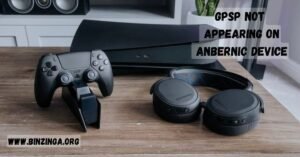If Hema FG Control doesn’t turn blue, it can be frustrating and confusing, especially for Oculus Quest 2 users who rely on this feature for an optimal experience. Understanding the implications of this issue is essential, as it not only affects your device’s performance but also your comfort during use. Thankfully, there are straightforward steps you can take to troubleshoot and resolve this problem.
If Hema FG Control doesn’t turn blue it may indicate underlying issues that could disrupt your gaming sessions. By following some simple troubleshooting methods and making adjustments, you can restore functionality and enhance your virtual reality experience. Let’s explore practical solutions to get your Hema FG Control working smoothly again!
If Hema FG Control Doesn’t Turn Blue: Why Understanding It Matters
If Hema FG Control doesn’t turn blue is a critical feature for your Oculus Quest 2. It manages how your device tracks movements and responds during gameplay. When Hema FG Control doesn’t turn blue, it can indicate that something is off with your headset. This might lead to performance issues, such as lagging or unresponsive controllers, which can significantly affect your gaming experience. Understanding Hema FG Control helps you appreciate how essential it is for smooth gameplay.
This control system works by monitoring your movements and ensuring everything runs smoothly. When it’s functioning well, you can enjoy immersive gaming sessions without interruptions. If Hema FG Control is not working properly, you may feel frustrated. You might struggle to interact with the virtual environment effectively. Knowing what this feature does allows you to troubleshoot more effectively if problems arise.
Moreover, If Hema FG Control doesn’t turn blue plays a role in eye comfort. A malfunction can lead to increased eye strain, especially during long gaming sessions. When it’s working correctly, you can enjoy longer hours of play without discomfort. Recognizing its importance not only enhances your understanding of the device but also encourages proactive care and maintenance. In summary, Hema FG Control is vital for both performance and comfort in VR, making it essential to keep it in good working order.
If Hema FG Control Doesn’t Turn Blue: Common Causes
If Hema FG Control doesn’t turn blue, several common issues could be the cause. One of the first things to check is whether your software is outdated. Keeping your Oculus Quest 2 updated is crucial for maintaining optimal performance. If you haven’t updated in a while, you may encounter bugs or glitches that can affect Hema FG Control. Always make it a habit to check for updates regularly, as this simple action can often resolve a myriad of problems.
Another potential cause is damaged sensors. If your headset has been dropped or mishandled, this can impair the sensors responsible for tracking. When the sensors are not working properly, If Hema FG Control doesn’t turn blue may fail to turn blue, indicating a problem. If you suspect physical damage, inspecting your headset for any visible signs can help determine if this is the root cause. In such cases, you might need professional assistance to fix or replace the damaged parts.
Additionally, software incompatibility can lead to issues with If Hema FG Control doesn’t turn blue. Some applications might not work well with outdated or unsupported software. Always ensure that both your device and its applications are up to date. Understanding these common causes empowers you to take action quickly, leading to a better overall VR experience. The sooner you identify the issue, the sooner you can get back to enjoying your favorite games.
Quick Fixes: What to Try First If Hema FG Control Doesn’t Turn Blue
If Hema FG Control doesn’t turn blue doesn’t turn blue, there are several quick fixes you can try. First, a simple restart of your Oculus Quest 2 can often resolve minor glitches. Just power it off and turn it back on again. This action resets many internal processes and can clear temporary issues. If the problem persists after restarting, the next step is to check your display settings. Make sure that everything is configured correctly for optimal performance.

Another quick fix is to activate the blue light filter. This feature not only reduces eye strain but can also help in resetting some of the device’s functionalities. If Hema FG Control doesn’t turn blue is not turning blue due to eye strain issues, turning on the filter might make a difference. Sometimes, small adjustments can lead to significant improvements in how your headset operates.
If neither of these steps works, you can try resetting the display settings to default. This can help restore any configurations that may have changed unknowingly. Look for the option in your settings menu and choose to restore factory settings. Keep in mind that this may revert other settings, so be prepared to readjust your preferences afterward. By following these quick fixes, you may resolve the issue and enhance your overall gaming experience without needing extensive troubleshooting.
Step-by-Step Troubleshooting for if hema fg control doesn’t turn blue
When you encounter issues with Hema FG Control, a step-by-step troubleshooting approach can be very effective. Start by checking for software updates. Navigate to the settings menu on your Oculus Quest 2 and look for any pending updates. Keeping your device updated is essential for optimal performance, as software updates often contain important bug fixes and enhancements. After installing any updates, restart your device to ensure that the changes take effect.
Next, if the software is up to date, consider resetting your display settings. This can often fix issues related to if hema fg control doesn’t turn blue. Go back to the settings menu and find the option to reset display settings to their default values. This step can help restore any previous configurations that may have caused problems. After resetting, test to see if Hema FG Control now turns blue.
If these steps do not resolve the issue, inspect your headset for any signs of physical damage. Check the sensors and lenses for dirt, scratches, or other potential issues. Keeping your headset clean can prevent many performance problems. If you notice any physical damage, it might be time to seek professional help. By following these troubleshooting steps, you can often resolve if hema fg control doesn’t turn blue issues and get back to enjoying your virtual reality experience.
The Impact of Not Having Hema FG Control Turn Blue on Your VR Experience
When Hema FG Control doesn’t turn blue, the impact on your VR experience can be quite significant. You may notice delays in responsiveness, making gameplay feel sluggish or unresponsive. This can lead to a frustrating experience, especially during fast-paced games where every second counts. The inability to track your movements accurately can make interactions within the virtual environment difficult, taking away from the immersive experience that VR is supposed to provide.
In addition to performance issues, not having Hema FG Control functioning properly can lead to increased eye strain. If the headset is not tracking correctly, you may find yourself straining to see or focus, resulting in discomfort during extended play sessions. This can make it harder to enjoy your games and may even deter you from using the device altogether. Eye fatigue can detract from the fun, so it’s essential to address any issues promptly.
Furthermore, a malfunctioning Hema FG Control can lead to safety concerns. If the device is not accurately tracking your movements, you risk bumping into real-world objects while immersed in a virtual environment. This can create a hazardous situation, especially if you’re playing in a space that’s not entirely clear of obstacles. Understanding the importance of Hema FG Control can motivate you to troubleshoot effectively, ensuring a safe and enjoyable gaming experience.
Preventing Future Issues: Tips for Maintaining Your Oculus Quest 2
To keep if hema fg control doesn’t turn blue functioning properly, regular maintenance is essential. Start by ensuring that your Oculus Quest 2 software is always up to date. Check for updates regularly in the settings menu, as these often contain important fixes and improvements. Keeping your device current helps prevent many common issues related to performance and features, including Hema FG Control.
Additionally, proper storage of your headset can make a big difference. Avoid leaving it in places where it could get damaged, such as on the floor or near sharp objects. Consider using a protective case when you’re not using your Oculus Quest 2. This helps safeguard the sensors and lenses from dust and scratches that can impair functionality.

Cleaning your device regularly is another critical step. Use a soft, dry cloth to wipe down the lenses and sensors. Keeping them free of dust and smudges will improve tracking and visual clarity. Finally, make sure to handle the headset gently. Avoid sudden drops or rough handling, as this can lead to physical damage. By following these maintenance tips, you can keep Hema FG Control functioning well and enjoy a smoother VR experience.
When to Seek Professional Help for Hema FG Control Problems
Sometimes, issues with if hema fg control doesn’t turn blue require professional assistance. If you’ve followed all troubleshooting steps and nothing seems to work, it may be time to contact support. Professional help can guide you through advanced troubleshooting techniques that you might not be aware of. They can also inform you about warranty options, repairs, or replacements if necessary.
Another indicator that you might need professional help is if your headset shows signs of physical damage. If you’ve noticed cracks, broken parts, or significant wear, it’s crucial to have your device inspected. Trying to fix hardware issues on your own can lead to more significant problems. In these cases, contacting customer support for repairs is often the best course of action.
Waiting too long to seek help can exacerbate the situation. If your gaming experience continues to be disrupted by if hema fg control doesn’t turn blue, don’t hesitate to reach out for assistance. The sooner you get support, the sooner you can return to enjoying your favorite VR games. Remember, it’s always better to address issues early rather than risk further complications.
User Experiences: Stories from the Community About Hema FG Control Issues
Engaging with the VR community can provide valuable insights if hema fg control doesn’t turn blue. Many users have faced similar challenges and have successfully found solutions. By sharing experiences on forums, social media groups, or dedicated VR platforms, you can gain knowledge from others who have been in your shoes. Hearing their stories can be reassuring and may even point you toward effective fixes that you haven’t tried yet.
Community discussions often reveal common causes and remedies if hema fg control doesn’t turn blue problems. For instance, some users might share that they solved their issues by updating their software or resetting their display settings. Others might describe how they realized their headset had sustained physical damage, prompting them to seek repairs. Learning from these experiences can help you navigate your own challenges more effectively.
User experiences can provide support and encouragement during frustrating times. When you know others have dealt with the same issues and found ways to resolve them, it can make troubleshooting feel less daunting. Remember, you’re not alone in facing these challenges. By connecting with the community, you can enhance your understanding and improve your overall VR experience.
Understanding If Hema FG Control Doesn’t Turn Blue: Its Role
Blue light plays a crucial role in the functionality if hema fg control doesn’t turn blue. When Hema FG Control doesn’t turn blue, it signifies that something is not working as it should. This blue light acts as an indicator that the system is tracking your movements accurately. When it’s active, it means the headset is properly responding to your actions in the virtual space. Understanding this connection helps you identify problems early.
In VR, the blue light represents clarity and functionality. If it’s not turning on, you might experience lag or even disconnection from the game. This can make your gaming experience less enjoyable, as you may struggle to interact with the virtual environment. Knowing how the blue light functions can empower you to take action if you encounter issues.

Moreover, the blue light is not just about performance; it also relates to user comfort. A properly functioning Hema FG Control means your headset is calibrated for eye comfort, reducing strain during long sessions. If the light doesn’t activate, it might lead to discomfort, making it hard to enjoy your VR adventures. By grasping the importance of blue light if hema fg control doesn’t turn blue, you can better appreciate its impact on your overall experience and take steps to maintain its functionality.
Advanced Troubleshooting: Fixing Persistent Hema FG Control Problems
If you find that Hema FG Control issues persist, advanced troubleshooting may be necessary. Start by performing a factory reset of your Oculus Quest 2. This step will erase all settings and data, returning your device to its original state. Make sure to back up any important data beforehand. After the reset, set up your headset again and check if hema fg control doesn’t turn blue functions correctly. This process often resolves deeper software-related problems.
Next, consider checking your environment. Sometimes, excessive light or obstructions can interfere with the headset’s sensors. Ensure that you are in a well-lit area but not too bright, as too much light can confuse the sensors. Clear any objects in the play area that might disrupt tracking. A clean and organized space is crucial for optimal performance.
Another advanced option is to connect your headset to a computer using the Oculus app. This can help you access advanced diagnostic tools and settings that may not be available on the headset itself. Running diagnostics can provide insights into what might be causing the issues. If all else fails, reaching out to customer support for more specialized assistance can help. They can offer solutions tailored to your specific problems, ensuring you get back to enjoying VR quickly.
Conclusion
In conclusion, if Hema FG Control doesn’t turn blue, it can be a big deal for your VR experience. Understanding why this happens is super important. You learned that the blue light shows when everything is working well, and when it’s not, you might face some problems. By trying out the troubleshooting tips and learning from the community, you can fix these issues and get back to enjoying your favorite games.
Remember, taking care of your Oculus Quest 2 is key to having fun in virtual reality. Regularly checking your settings, keeping your play area clear, and staying connected with other users can help prevent problems. So, if the blue light doesn’t shine, don’t worry! With some patience and the right steps, you can make your VR adventures even better. Happy gaming!
FAQs
Q: What does it mean if Hema FG Control doesn’t turn blue?
A: If Hema FG Control doesn’t turn blue, it usually means there’s an issue with the headset or its sensors, affecting performance and tracking.
Q: How can I fix Hema FG Control not turning blue?
A: Try restarting your Oculus Quest 2, checking for software updates, and ensuring your display settings are correct. If these don’t work, reset your display settings to default.
Q: Is the blue light important for my Oculus Quest 2?
A: Yes, the blue light indicates that the Hema FG Control is functioning properly. If it’s off, it can lead to tracking issues and a less enjoyable VR experience.
Q: When should I use the blue light filter on my Oculus Quest 2?
A: Use the blue light filter during evening gaming sessions to reduce eye strain and improve your comfort, especially when playing for long periods.
Q: Can I still use my Oculus Quest 2 if Hema FG Control doesn’t turn blue?
A: You can use it, but expect potential performance issues like lag or unresponsive controllers, which may hinder your gameplay.
Q: How often should I update my Oculus software?
A: It’s best to check for updates regularly, ideally every few weeks, to ensure you have the latest features and fixes that improve performance.
Q: When should I seek professional help for Hema FG Control issues?
A: If basic troubleshooting steps don’t resolve the problem after several attempts, or if you notice physical damage to the headset, consider seeking professional repair assistance.
STAY UPDATE WITH: Binzinga.org



